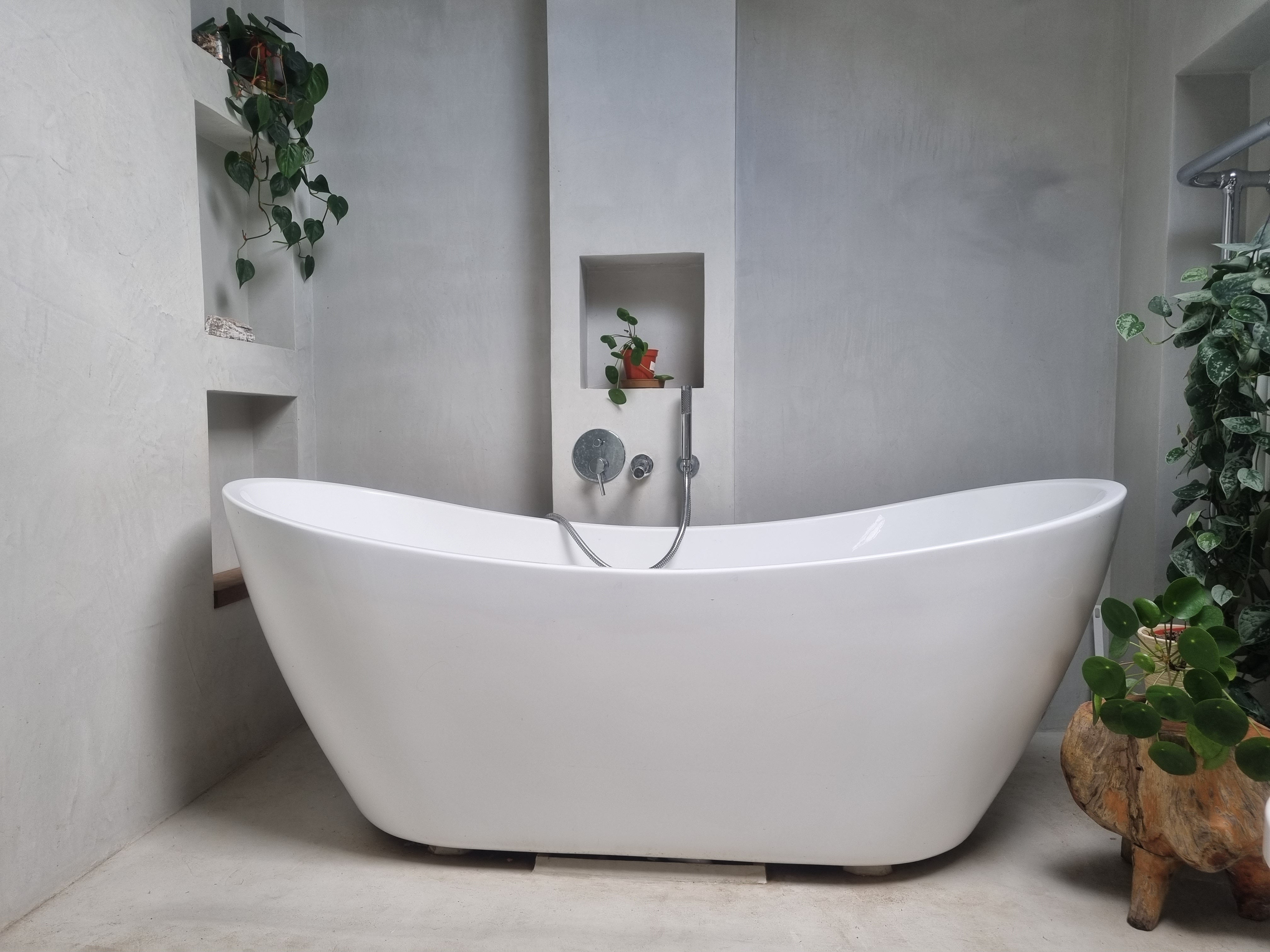Can You Apply Microcement in Bathrooms?

Share
- Bathroom
- Flooring
- Home Decor
- Home Renovation
- Microcement
- Microcement Application
- Microcement Floor
- Microcemento
- Property Developement
Microcement is a multi-layer coating system with several qualities that make it suitable for bathroom and wet room applications. The seamless, water-resistant finish is a visually appealing choice that offers functional and aesthetic benefits over tiles.
Why is Microcement a good choice for bathrooms?
1.It’s an Aesthetic and Versatile Surface Solution
For a bathroom with a minimalistic, contemporary appeal, no surface finish could compete with Microcement when it comes to versatility.
The multi-layer system includes a decorative coating that can be coloured to any bespoke choice, and applied in various different textures. Our Continuo Microcement system is also available with different protecting coats, offering you a matt, satin or gloss finish, to further customize your Microcement surface.
To explore our neutral and bright colour selection for Microcement, click here!
If you have a specific colour in mind and need a bespoke option, book a colour match service here!
2.It’s Durable and Water-Resistant
Thanks to its different components, the Microcement system’s different layers work together to ensure a durable and water-resistant finish. This makes it suitable for bathrooms, as it will also withstand moisture and humidity.
What makes Microcement water-resistant?
A proper application of each component will make the finish water-resistant.
This starts by using the right primer, to ensure the base coat can adhere to the substrate, whether that’s a porous or non-porous surface. With the base, a mesh is also applied, which together will form an anti-crack system, that prevents any cracks on the surface.
Once the base coat is applied, the decorative coats follow, which will provide an aesthetic finish and texture.
The final coat includes the sealers and protectors, which create a water-resistant surface that is also able to withstand the daily wear-and-tear the surfaces are exposed to.
Due to these qualities, Microcement can be applied anywhere in a bathroom, including the shower area, vanity tops, floors and walls.
If you are interested in the full process of the Microcement application, check out this tutorial!
The Maintenance of Microcement
Maintaining these surfaces is more simple than it seems. Regular cleaning with mild detergents and protective measures are very useful and simple steps to take, to ensure the longevity of the finish.
Periodic resealing is recommended to keep the surface for it to maintain its waterproof qualities, and preserve its original look. These can vary depending on which Microcement you used, and what surface was it applied on. For our Microcement, we recommend resealing every 5-10 years.
Maintaining microcement in bathrooms is straightforward. Regular cleaning with mild detergents and water is typically sufficient to keep the surfaces looking new. Periodic resealing is recommended to maintain the waterproof properties and prolong the lifespan of the microcement.
Conclusion
There are several reasons that make Microcement suitable for bathroom applications, both aesthetic and functional. The seamless, durable finish it provides makes it a popular choice for wet room areas, where there is a growing demand for bespoke finishes that create a visually appealing design for residential and commercial properties as well.
A professional application and regular maintenance make it a great choice for stylish bathrooms, that can stand the test of time.
